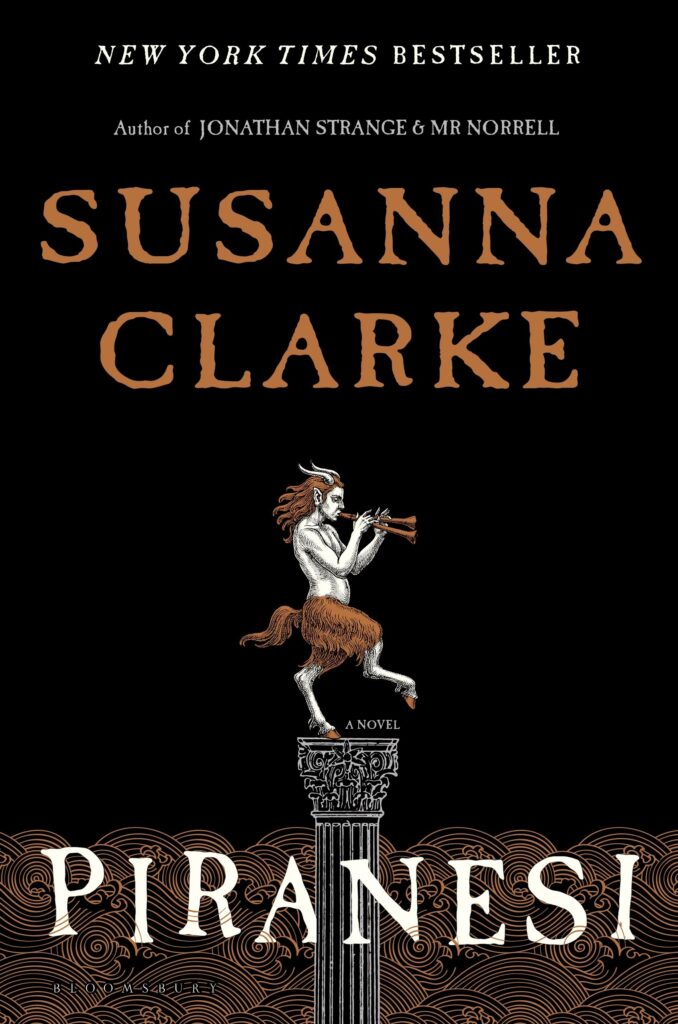I have climbed up to the Upper Halls where Clouds move in slow procession and Statues appear suddenly out of the Mists. I have explored the Drowned Halls where the Dark Waters are carpeted with white water lilies. I have seen the Derelict Halls of the East where Ceilings, Floors – sometimes even Walls! – have collapsed and the dimness is split by shafts of grey Light.
In all of these places I have stood in Doorways and looked ahead. I have never seen any indication that the World was coming to an End, but only the regular progression of Halls and Passageways into the Far Distance…
This book has got to be the loveliest thing I’ve read in a long time. In the tradition of C.S. Lewis and Seanan McGuire and Alix E Harrow, Susanna Clarke has created another world that’s just a doorway apart from ours, a world that’s a House with an infinite number of marble halls, an infinite number of marble statues, a trapped ocean that flows through the lower levels, and stairways that go all the way up to the clouds and the rain.
In the entire House there are only fifteen people; thirteen of them are dead. The other two are Piranesi (scientist and explorer and Beloved Child of the House), and the Other, Piranesi’s only and dearest friend.
Maybe.
The book starts with the reader dropped right into the center of the House, which is something out of a dream. I mean that literally; I had a dream one time of a bright house that’s made out of marble, with water flowing down the stairs and making deep pools in the long hallways. It makes me wonder if Clarke has tapped into some kind of Jungian archetype here. (I don’t remember statues in the dream, but it’s possible I was looking the wrong way.)
Ocean tides sometimes flood dangerously through the halls of the House. Drinkable water can only be collected from rain, food is whatever sealife that can be caught, along with all the seaweed you can eat. Snow fills the halls in the wintertime, with only dried seaweed to burn for heat. And the thirteen dead people in the house are all bones, named for what condition they’re in and how they’re stored: the Biscuit-Box Man, the Concealed Person, the Folded-Up Child.
All of this would make this a grim place to live, except we see everything through the eyes of Piranesi, who loves the House. He loves every part of the House, everything he runs into is something else that delights him. He loves fishing and collecting seaweed, or laughing with the flock of rooks in the Sixth North-Western Hall, or bringing offerings of waterlilies to the thirteen dead, or watching the windows in the upper levels light up during a thunderstorm. The narration of the book comes from the journals he keeps; he capitalizes random words in an almost childlike way, and his method of dating the journals is a little unconventional.
entry for the seventeenth day of the fifth month in the year the albatross came to the south-western halls.
Piranesi especially loves the Statues, which are crowded through every Hall and situated on every available space. They’re wonderfully random. The First Vestibule contains four giant Minotaurs. Piranesi hides his journals in the space behind the Statue of an Angel caught on a Rose Bush. Statues show giants trying to claw their way out of walls, a faun with a finger to his lips, two kings playing chess, and towering figures fifty meters high and half submerged in the Drowned Halls, making an excellent place for fishing by moonlight.
The story is made even more dreamlike by the fact that Piranesi is very much an Unreliable Narrator. As far as he remembers, he’s always been in the House, maybe even made by the House itself. He doesn’t remember when he first met the Other, or when he started to help the Other in his search for a Great and Secret Knowledge, a quest that Piranesi doesn’t have a lot of confidence in. But the Other is his friend, so he has no reason to doubt him when the Other says that a 16th Person is going to invade the House and try to drive Piranesi insane…
…which may have already happened, because there’s something wrong with Piranesi’s journals. The meticulously-kept index references entire journals that don’t exist, the ones he does have show words he doesn’t remember writing, and pages he doesn’t remember tearing out. What Piranesi sees with his own eyes are equally as important as his occasional visions showing him things he doesn’t have words for, or what he imagines the 16th person might say in response to his stern message about how they need to Not Be Evil anymore, or what he interprets that the birds are trying to tell him in the Seventeenth Vestibule.

The plot of the novel involves secrets and betrayal, a murder mystery, and a metaphorical science/magic used by a lunatic – and strangely petty – evil genus. But by the end of the book it felt less important to find out whodunnit than it was to just…absorb the achingly beautiful setting, soaking it in like rainwater. Not least of this book’s charms is the fact that the protagonist Piranesi isn’t just full of wonder and love for his surroundings, he’s goodhearted as well. He’s just endlessly kind, to the nesting albatrosses, to the bones of the dead, to every part of the House, right down to his own ghosts and hallucinations, and even his enemies. I could see myself coming back to this one over and over for its almost meditative calm and the concept of a lonely protagonist who’s hardwired to see the good in everyone.